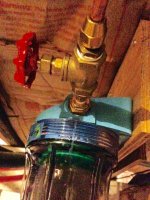blueboy
Aluminum
- Joined
- Dec 15, 2015
- Location
- Pittsburgh
I have drinking water filters I need to run at .5 GPM max. I need to know the pipe dia. Best I figured out is .249 with a calculator on line but they don't ask for PSI. I think that would make a difference. PSI is about 90-95
Thanks, Blue
Thanks, Blue





